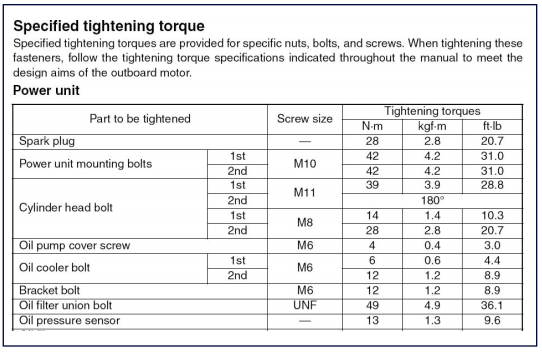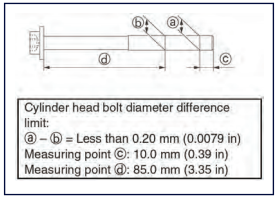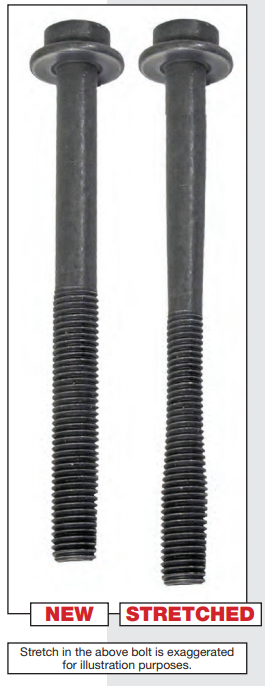Typically, there are two means of ensuring fasteners (screws, bolts, and nuts) to remain tight:
- Using the “elastic properties” of the fastener material to maintain clamping pressure
- Mechanically locking the fastener
“Elastic properties”? That’s not something everyone stops to think about. Elasticity is the ability of material to deform (stretch) and return to its original shape. Metal, like a rubber band, will stretch under tension and return to its original shape when the tension is removed. Unlike a rubber band, metal can only be stretched a very small amount and still be able to return to its original shape. Stretch metal too far and it will remain permanently stretched… or even break.
Machine screws, nuts, and bolts, when tightened to a specific amount of torque, will stretch to provide the tension necessary to keep a fastener tight. Applying insufficient torque will not stretch the fastener adequately to generate the tension necessary to remain tight. Applying too much torque will overstretch the fastener, exceeding its elastic limits also resulting in insufficient tension to keep the fastener tight. Over-stretching also weakens a fastener and could eventually cause it to break. The right amount of torque is determined by the size and material of the fastener and the components being secured.
Mechanically locking fasteners with lock washers, nylon insert lock nuts, castle nuts with cotter pins, or thread-locking liquids is typically used when the torque necessary to stretch the fastener sufficiently could result in too much clamping pressure on the components. Mechanical locking is also used when extra security is required for safety and where vibration and other factors could possibly loosen fasteners even when properly stretched.
Yamaha typically does not rely on lock washers or thread locking liquids to secure most fasteners. To ensure fasteners remain properly tightened, torque specifications are provided in the appropriate service manuals. Torque specifications are determined by the size and strength of each fastener and the component materials the fasteners are securing. Current service manuals include torque specification information tables in Section 1.
Specifications are also provided in each section of the manual for specific service procedures. If torque specifications are not listed for a particular procedure, a “general tightening torque” chart is also provided in Section 1.

Technicians have used some variation of the following procedure for many years to torque bolts:
• Clean and dry all fastener threads (including the mating threads). In some situations the service manuals may specify to apply oil, thread sealant or thread locker to the fasteners.
• Partially tighten all fasteners.
• Tightening to spec using a torque wrench. A tightening pattern may be specified in the manual if multiple fasteners are involved.
• Some fasteners (cylinder head, crankshaft, connecting rod, and crankcase) may specify tightening in steps until final torque is achieved. Newer Yamaha four-stroke models specify tightening procedures for some applications not previously used on older models for similar applications. “Torque-to-angle” procedures have become the preferred method of achieving the desired bolt stretch on bolts used in highly stressed applications such as cylinder heads, flywheels, crankshafts, and connecting rod.
Why torque to angle? Even a properly calibrated torque wrench can be fooled and give misleading indication of achieving proper torque when tightening fasteners to high torque values. The cleanliness of the threads, oil or no oil on the threads, or socket extensions can lead to under- or over-stretching of fasteners. Applying an initial low torque value followed by turning the fastener an additional amount, typically 90˚ or 180˚, will more accurately stretch a fastener to its design limit.
Why do some fasteners require replacement after one use? Service procedures occasionally will specify to not reuse or measure fasteners before reusing them. 4.2L V6 and V8 flywheel bolts are examples of fasteners requiring replacement if removed. Torqueto-angle bolts used in high-load applications could possibly stretch beyond their elastic limits if reused. F70LA, 4.2L V6, and V8 cylinder head bolts, and 4.2L crankcase bolts are also torque-to-angle but the length of these bolts permit measuring to determine if they are within permissible limits to reuse.

As a bolt is stretched, the material between the bolt head and the engaged threads will decrease in diameter, as shown in the following illustration. Procedures in the F70LA, 4.2L, and V8 service manuals, as shown below, detail specific measurement points: a point (b) where the bolt diameter will have decreased from stretching versus point (a) where the original diameter will not be affected. The difference between the two diameters determines whether the bolt can be reused; a difference less than the specified maximum is OK, a difference larger than specified maximum must be replaced. The measurement procedure is less accurate when applied to shorter bolts, like the 4.2L V6 and V8 flywheel bolts. The “do not reuse” rule ensures their elastic limit is not exceeded.

Portions of this article are reprinted from Yamaha On Board Magazine with full permission from Yamaha Motor Corp USA
Some of these comments and suggestions are from SIM Yamaha and do not reflect, nor are they intended to represent, any position from Yamaha Motor Corp USA. SIM Yamaha freely offers this advice based on our years of experience selling Yamaha outboard engines, replacement parts and servicing Yamaha outboards. Our goal is to give you the information you need to properly maintain your Yamaha outboard engine.